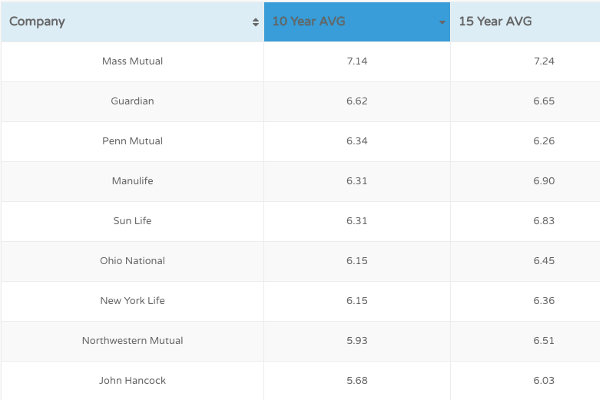Index Universal Life (IUL) insurance is a type of permanent life insurance that offers both a death benefit and a cash value component. Unlike traditional whole life insurance, IUL policies provide the opportunity to earn interest based on the performance of a stock market index, such as the S&P 500. However, with the potential for greater returns comes the question of whether the cost of an IUL policy is worth the investment. In this blog post, we will explore the factors that influence the index universal life insurance cost and help you determine if it aligns with your financial goals.
Click below to get a Quote Now
Get Me A Quote
Click below to get a Quote Now
Get Me A Quote
Understanding Index Universal Life Insurance
Index Universal Life insurance combines the benefits of traditional whole life insurance with the potential for higher returns linked to the performance of a stock market index. The cash value component of an IUL policy grows based on the movement of the chosen index. If the index performs well, the policy's cash value can increase significantly. However, if the index experiences a downturn, the cash value may not grow or even decline.Factors Influencing the Cost of Index Universal Life Insurance
Several factors influence the cost of an Index Universal Life insurance policy. These include:- Age and Health: Your age and health condition play a significant role in determining the cost of insurance. Younger and healthier individuals generally receive lower premiums.
- Death Benefit Amount: The death benefit is the amount paid out to beneficiaries upon the policyholder's death. Higher death benefits typically result in higher premiums.
- Policy Duration: The length of the policy's coverage period affects the cost. Longer coverage periods may require higher premiums.
- Index Performance Cap and Participation Rate: Insurance companies set a cap on the maximum interest credited to the policy's cash value based on index performance. The participation rate determines the percentage of the index's growth that is credited to the policy. These factors impact potential returns and, consequently, the cost of the policy.
Discover Your Financial Potential: Inquire Now!
Click below to get a Quote Now
Get Me A Quote
Benefits and Considerations of Index Universal Life Insurance
- Potential for Higher Returns: IUL policies offer the opportunity to earn higher returns compared to traditional whole life insurance. However, it's important to note that returns are not guaranteed and depend on the performance of the selected index.
- Tax Advantages: Similar to other forms of permanent life insurance, the cash value growth in an IUL policy accumulates on a tax-deferred basis. Additionally, policyholders may be able to access the cash value through policy loans or withdrawals on a tax-free basis.
- Flexibility: IUL policies often provide flexibility in premium payments, allowing policyholders to adjust their contributions based on their financial situation.
- Considerations: IUL policies may have higher fees and charges compared to other life insurance options. It's essential to carefully review the policy's terms and conditions, including the cap and participation rate, surrender charges, and any potential policy loans.
Is Index Universal Life Insurance Worth the Investment?
Determining whether an Index Universal Life insurance policy is worth the investment depends on your individual circumstances and financial goals. Consider the following factors:- Risk Tolerance: IUL policies are subject to market fluctuations, which can impact the cash value growth. If you have a low tolerance for market volatility, other life insurance options may be more suitable.
- Long-Term Financial Goals: If you seek potential higher returns and are willing to accept the associated market risks, an IUL policy may align with your long-term financial goals.
- Diversification: IUL policies offer the opportunity to diversify your investment portfolio by allocating a portion of your funds to the stock market index performance.
- Consultation with a Financial Advisor: It's advisable to consult with a qualified financial advisor who can assess your specific circumstances and help determine if an IUL policy is appropriate for you.
Conclusion
Index Universal Life insurance provides the potential for higher returns linked to stock market performance, but it also carries risks. The decision to invest in an IUL policy should be based on careful evaluation of your risk tolerance, financial goals, and consultation with a financial advisor. By considering these factors, you can make an informed decision regarding the cost and suitability of an Index Universal Life insurance policy for your needs.Discover Your Financial Potential: Inquire Now!
Click below to get a Quote Now
Get Me A Quote



